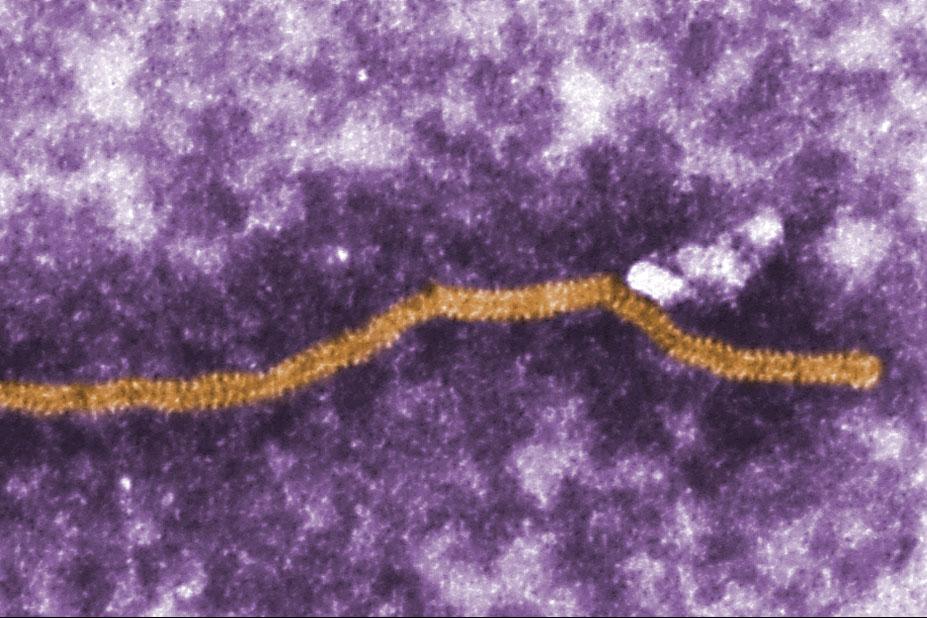World Zoonoses Day on 6 July is dedicated to raising awareness and understanding of zoonoses – diseases that spread from animals to humans. Zoonoses are a focus of research at The Pirbright Institute, a national research centre that works to enhance the UK’s capability to contain, control and eliminate viral diseases of livestock and those that can spread from animals to humans. Nipah virus (NiV) infection is an example of a newly emerging zoonotic virus that infects and causes disease in a wide range of animals as well as humans.
Earlier this year an outbreak of NiV in the South Indian state of Kerala caused the deaths of seventeen people, though no new cases have been reported since 30 May, 2018. Despite periodic outbreaks and an estimated risk to more than 2 billion people through the broad host range of the virus, and the widespread distribution of the NiV natural reservoir species, Old World fruit bats, no vaccines or therapeutics are currently approved for human or livestock use.
Dr. Simon Graham, leader of the Porcine Reproductive and Respiratory Syndrome Immunology group has been awarded a grant from Innovate UK to lead an international team developing an inexpensive, safe and effective vaccine to protect pigs against NiV. Pigs played a significant role in transmission of the virus to humans during the first recorded outbreak of NiV in Malaysia in 1998-99 and its spread to Singapore.
Researchers at Pirbright, the University of Oxford, the University of Queensland and CSIRO in Australia, the University of Malaya, Malaysia, and Assam Agricultural University, India are working towards developing a variety of vaccine candidates that will then be tested in pigs, with the idea that the strongest candidate will go forward for further development and testing.
Dr. Dalan Bailey and the Viral Glycoproteins group study how viruses use glycoproteins, the proteins that stick out from viruses like spikes, to attach to and enter the cells they infect. For the Innovate UK grant project they are developing four NiV vaccine candidates, one of which is engineered to produce a secreted form of the NiV glycoprotein G, sG, which may produce a robust virus-neutralising serum antibody response.
The primary goal of the research is to develop a NiV vaccine for use in pig populations where Nipah is present. “Developing a NiV vaccine for pigs will help protect pig farming and livestock food production in areas of the world where high pig density overlaps with high NiV infection risk”, said Dr. Graham. Underscoring the mission of The Pirbright Institute to prevent and control viral diseases that spread from animals and humans Dr. Graham added that “any vaccine developed will be useful in other mammalian species, and data generated from the project will support further efforts to develop human NiV vaccines”. Find out more about the Nipah project.
More about Nipah virus
NiV is a negative sense, single-stranded RNA virus that belongs to the Henipavirus genus of viruses in the family Paramyxoviridae. Its natural reservoir is Old World fruit bats of the Pteropus genus in the Pteropodidae family. Transmission to humans can occur through direct contact with infected bats or bat guano from infected bats, infected pigs, or from other infected humans.
More about World Zoonoses Day
World Zoonoses Day commemorates the anniversary of the Louis Pasteur’s successful administration of a vaccine against Rabies virus, a zoonotic virus, to Joseph Meister on 6 July, 1885, and is dedicated to raising awareness of awareness and understanding of zoonotic diseases.
What are zoonoses?
Zoonoses, also known as zoonotic diseases, are caused by viruses, bacteria and parasites, as well as other unconventional agents that spread from vertebrate animals to humans. The wide range of species affected creates both public health and livestock food production problems, resulting in major socio-economic disruption.
Ebola virus caused what is possibly the most recently famous example of a zoonotic disease, especially when considering the scale of the outbreak that occurred in multiple countries of West Africa. It started “silently” in Guinea in 2013 and spread throughout the region, mainly in Guinea, Liberia and Sierra Leone, until 2016. This year has seen an outbreak of Ebola virus in the Democratic Republic of Congo.
Other notable zoonotic diseases that have captured the headlines include Severe Acute Respiratory Syndrome (SARS) and Zika. Avian influenza viruses (A/H5N1, A/H7N9) and other animal influenza viruses, e.g., swine influenza virus A/H1N2v and A/H3N2v, are also examples of a zoonoses. The largest zoonotic epidemic of all though is HIV. All of these are caused by viruses that have “jumped” from animals into humans through what is called a “spillover” event.
Population expansion and encroachment into rural areas, and the subsequent deforestation and destruction of eco-systems, is a huge factor in creating spill over. It brings people, who have not previously been exposed to infectious diseases that normally reside in other hosts, into more frequent contact with these infectious agents.
Research on zoonoses at The Pirbright Institute includes:
